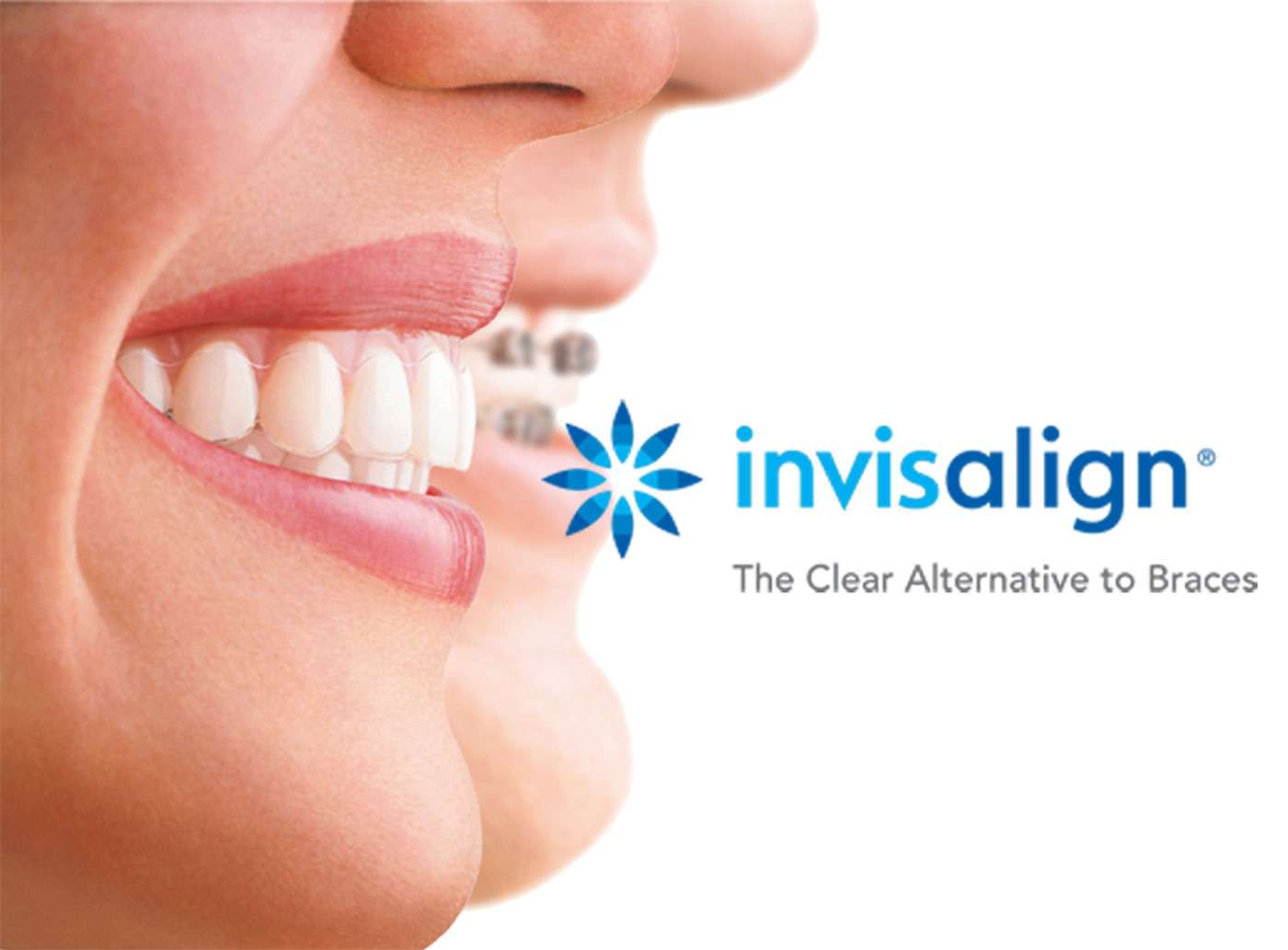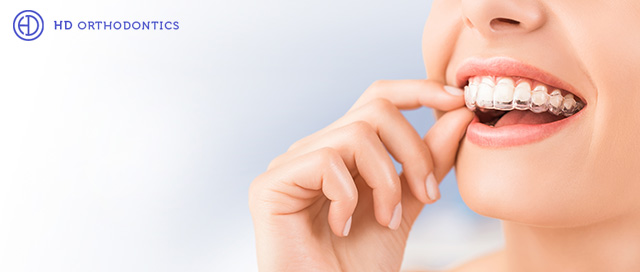Top Factors to Choose Invisalign Over Other Orthodontic Treatments
Top Factors to Choose Invisalign Over Other Orthodontic Treatments
Blog Article
Invisalign vs. Conventional Braces: Which Option Is Right for You?
When thinking about orthodontic treatment, the option in between Invisalign and standard braces presents several crucial factors that merit cautious assessment. Invisalign provides a very discreet option with removable aligners, while traditional dental braces provide a much more noticeable yet efficient option for extreme misalignment. Each alternative includes distinctive advantages and drawbacks associated with aesthetics, convenience, treatment period, and cost. Recognizing these nuances is essential for making a notified decision that aligns with your individual preferences and lifestyle. The inquiry continues to be: which option will ideal meet your orthodontic requirements and expectations?
Review of Therapy Options

In contrast, typical braces include metal braces and cables that are adhered to the teeth. This approach uses continuous pressure in time to attain placement. While effective for intricate orthodontic concerns, standard braces call for regular visits for adjustments and can present difficulties in keeping oral health as a result of the trouble of cleaning about cords and brackets.
Both options have their merits, and the choice frequently pivots on details oral problems, way of living choices, and client conformity. Inevitably, getting in touch with an orthodontic expert is critical for identifying the most suitable treatment strategy customized to individual demands. Recognizing the subtleties of each choice can significantly affect the overall success of orthodontic therapy.
Visual Factors To Consider
A considerable element influencing the selection in between Invisalign and standard braces is the visual appeal each therapy provides. Invisalign aligners are crafted from clear plastic, making them basically invisible when put on.
In comparison, typical braces contain metal brackets and cords, which can be a lot more obvious. While improvements in orthodontic modern technology have led to the development of smaller sized brackets and tinted elastics, conventional braces still preserve an even more obvious account. For some people, the exposure of braces may hinder them from seeking essential treatment.
Eventually, the selection in between Invisalign and standard braces might depend upon personal choices relating to appearances. People who prioritize discretion frequently favor Invisalign, while those that are much less concerned regarding visibility might go with traditional dental braces. Recognizing the aesthetic effects of each alternative is critical for making a notified decision that aligns with one's lifestyle and preferences.
Convenience and Convenience

In terms of convenience, Invisalign aligners are removable, i loved this allowing clients to appreciate their favorite foods without limitation and keep optimum dental hygiene. Cleaning and flossing are streamlined, as the aligners can be taken out throughout these regimens, whereas conventional braces call for careful steering around braces and cords.
Additionally, Invisalign's progressive system permits less orthodontic sees. Clients usually obtain multiple collections of aligners simultaneously, which can streamline the therapy procedure and decrease time spent in the orthodontist's chair. In comparison, conventional dental braces demand routine modifications, making them much less practical for those with active routines. Invisalign. On the whole, the comfort and comfort of Invisalign make it an attractive choice for several individuals looking for orthodontic therapy.
Therapy Period and Efficiency
While both Invisalign and traditional braces are efficient in fixing dental imbalances, the duration of therapy can vary considerably in between the 2 choices. Typically, Invisalign treatment can take anywhere from 12 to 18 months, relying on the complexity of the instance. The clear aligners work by progressively moving teeth right into their desired settings, and routine follow-ups with an orthodontist help make sure progression remains on track.
In contrast, traditional dental braces frequently require a longer dedication, usually ranging from 18 months to 3 years. This is due to their set nature and using braces and cables, which can be more effective for serious imbalances and complex situations (Invisalign). The treatment efficiency of traditional dental braces is well-documented, as they enable for exact adjustments and greater control over tooth movement
Inevitably, the choice in between Invisalign and typical dental braces may pivot on both the awaited therapy period and the certain dental concerns handy. Consulting with an orthodontist is vital, as they can offer customized suggestions based upon specific demands, guaranteeing the picked method aligns with wanted outcomes and durations.
Cost Comparison and Insurance Policy Alternatives
Price plays a significant duty in the decision-making procedure for people taking into consideration orthodontic treatment, whether choosing Invisalign or conventional dental braces. On standard, the cost of Invisalign varieties from $3,000 to $8,000, while standard dental braces generally cost between $2,000 and $6,000. Variables affecting these costs include the intricacy of the instance, the period of therapy, and geographical location.
Numerous dental insurance plans give partial protection for orthodontic therapies, however the specifics can differ widely. Normally, standard dental braces might be much more often covered by insurance coverage plans compared to Invisalign, which some insurance providers classify as a cosmetic treatment.
Furthermore, several orthodontic practices offer adaptable payment strategies, making both treatment alternatives much more obtainable. People ought to ask about moved here potential funding choices and discount rates for in advance payments. Evaluating the overall expense, consisting of insurance benefits and repayment strategies, is necessary for making an educated decision that straightens with both visual choices and spending plan considerations.

Conclusion
In summary, the choice in between Invisalign and traditional braces depends upon several factors, consisting of aesthetic choices, convenience, therapy period, and cost. Invisalign provides a discreet, removable choice that assists in dental hygiene and nutritional versatility, while conventional braces might be a lot more suitable for intricate dental issues and typically come with a reduced price factor. Ultimately, examination with an orthodontist is important to analyze individual situations and determine one of the most appropriate therapy choice for attaining optimum dental alignment.
When taking into consideration orthodontic therapy, the option between Invisalign and traditional braces offers several crucial variables that warrant careful analysis.Comparing Invisalign and traditional dental braces reveals distinctive therapy alternatives for orthodontic correction.While both Invisalign and standard braces are efficient in dealing with oral imbalances, the duration of treatment can vary dramatically between the 2 alternatives.Price plays a significant role in the decision-making process for individuals considering orthodontic treatment, whether choosing for Invisalign or typical braces.In summary, the selection in between Invisalign and standard dental braces hinges on several aspects, consisting of visual preferences, investigate this site convenience, therapy duration, and expense.
Report this page